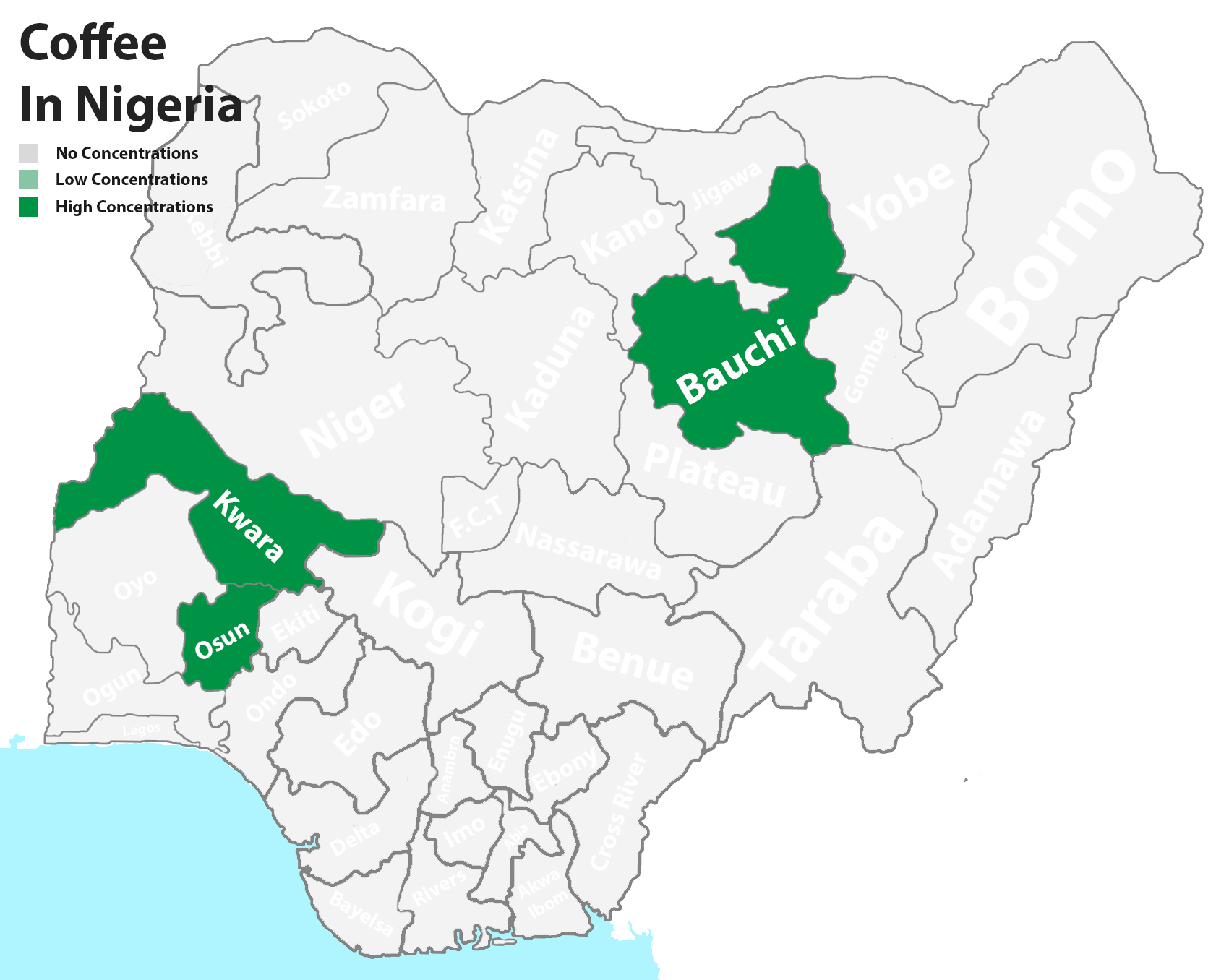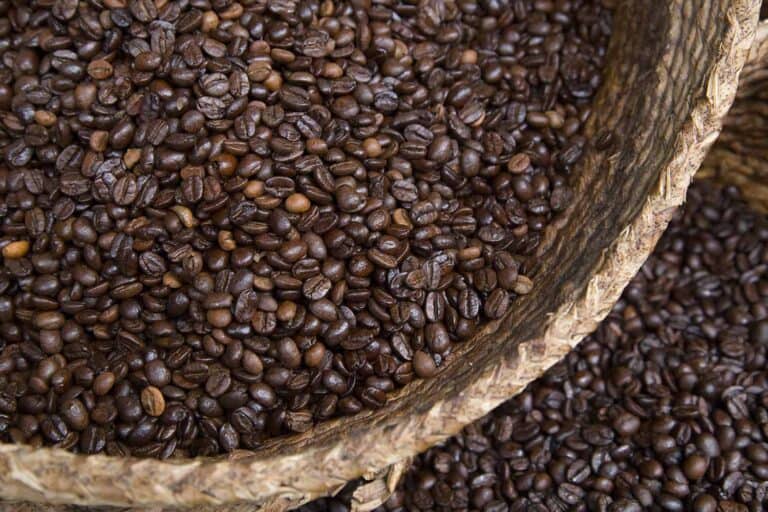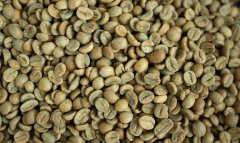Explore the coffee industry in Nigeria () Nigeria coffee bean flavor production development story and brand
Explore the coffee industry in Nigeria
Coffee was first introduced to Nigeria in the late 19th century and was first recorded for export in 1896. Coffee has been the main cash crop for farmers in the country for decades.
However, in the 21st century, the country's coffee production began to decline. Although Nigerian farmers planted about 89000 bags of 60 kilograms of coffee in 2006, that number fell by more than 50 per cent in just 15 years.
In order to know more about coffee production in Nigeria.

Coffee production in Nigeria
In the 1930s, decades after coffee was first introduced to Nigeria, the government began to promote its cultivation by providing Arabica and Robusta seeds to farmers across the country.
Now, in less than 100 years, the country's coffee production is facing many problems. The amount of land used to grow coffee is declining, the soil nutrients on many farms are depleted, and as many coffee farmers belong to the older generation, there is a wide skills gap.
Today, robusta coffee accounts for 90% of all coffee exports in Nigeria. Robusta is grown in 14 states across the country, including Oyo, Ogun, Ondo, Ekiti, Kwara, Kogi, Edo, Delta, Abia, Cross River, Akwa Ibom, Taraba, Bauchi and Jos.
Princess Adeyinka is the founder of Happy Coffee, a Nigerian brand that promotes domestic coffee.
Most of the country's coffee trees are aging and have low yields. In addition, crop diseases such as coffee berry disease have dimmed the prospects for coffee cultivation. Due to the lack of widespread understanding, Nigeria is not a production power.
But if you talk about Nigeria, you will hear about oil. Until a decade ago, agriculture had not really formed [in the same way], although that was slowly changing. " Over the years, there have been several peaks in coffee production in Nigeria, including the late 1960s, the mid-1980s and, most recently, 2006. Since then, however, the numbers have fallen steadily. "most cash crops don't get any motivation. We hope that coffee will return to the glory of the 1960s and 1970s. " Then there was oil, and when oil became the main national commodity, coffee production declined, and eventually many farmers gave up coffee. "
Although Robusta coffee accounts for most of the country's coffee, a small number of small farmers in Nigeria have begun to grow higher-quality Arabica coffee. However, due to lack of awareness, limited market access and very small harvests, there is little reason to grow it.
Arabica coffee is grown only in two states: the Kros River and Talaba. According to a source, about 110 different varieties of Arabica coffee are currently being tested in the Mambilla plateau in Talaba, although the exact varieties used are not clear.
Because the amount of information about Nigerian Arabica coffee is very limited, there is no flavor characteristic of universal attribution. However, Princess says Happy Coffee's "Nigerian blended coffee" is grown in Talaba with chocolate and fruit flavors and floral scents.
Mai Shayi is another coffee brand springing up in Nigeria. It sells a range of high-altitude coffee, many of which are sweet and fruity.
Interestingly, as early as the early 1900s, seed stocks purchased by producer Mai Shayi were introduced into the Nigerian Highlands from Jamaica.

Important Notice :
前街咖啡 FrontStreet Coffee has moved to new addredd:
FrontStreet Coffee Address: 315,Donghua East Road,GuangZhou
Tel:020 38364473
- Prev

How long is the shelf life of coffee beans? The aging of raw coffee beans causes the coffee to be too dry and soft.
How long is the shelf life of coffee beans? Raw coffee beans can be preserved for 6 to 12 months, depending on how they are stored and the conditions under which they are stored. When you compare it with six weeks of roasted coffee beans or one or two weeks of ground coffee, it's no wonder more and more people are turning to raw coffee beans. Having said that, the better you take care of raw coffee beans, the longer their life
- Next

Other uses and benefits of coffee cherries Cascara Cascala Tea Coffee Pulp is good for Health?
Other uses and benefits of coffee cherries the use of coffee fruits is not only better for the environment, but also has impressive health benefits. It is rich in antioxidants and can provide you with solid health promotion. Some innovative coffee producers will not stop at Cascala tea. Nowadays, coffee fruits are used to produce different products, such as butter, chocolate and even popsicles.
Related
- Detailed explanation of Jadeite planting Land in Panamanian Jadeite Manor introduction to the grading system of Jadeite competitive bidding, Red bid, Green bid and Rose Summer
- Story of Coffee planting in Brenka region of Costa Rica Stonehenge Manor anaerobic heavy honey treatment of flavor mouth
- What's on the barrel of Blue Mountain Coffee beans?
- Can American coffee also pull flowers? How to use hot American style to pull out a good-looking pattern?
- Can you make a cold extract with coffee beans? What is the right proportion for cold-extracted coffee formula?
- Indonesian PWN Gold Mandrine Coffee Origin Features Flavor How to Chong? Mandolin coffee is American.
- A brief introduction to the flavor characteristics of Brazilian yellow bourbon coffee beans
- What is the effect of different water quality on the flavor of cold-extracted coffee? What kind of water is best for brewing coffee?
- Why do you think of Rose Summer whenever you mention Panamanian coffee?
- Introduction to the characteristics of authentic blue mountain coffee bean producing areas? What is the CIB Coffee Authority in Jamaica?

